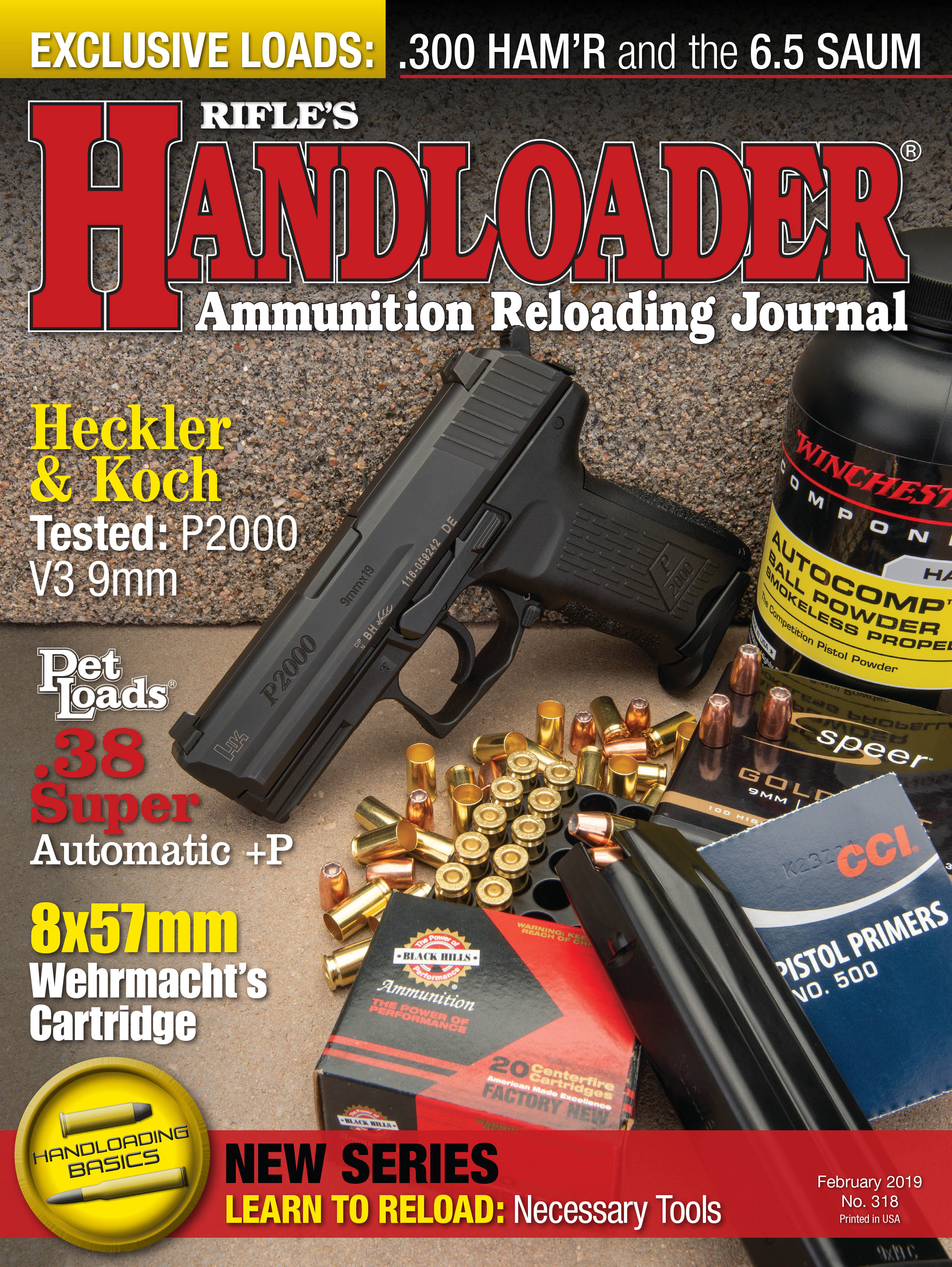Cartridge Board
.303 Savage
column By: Gil Sengel | February, 19
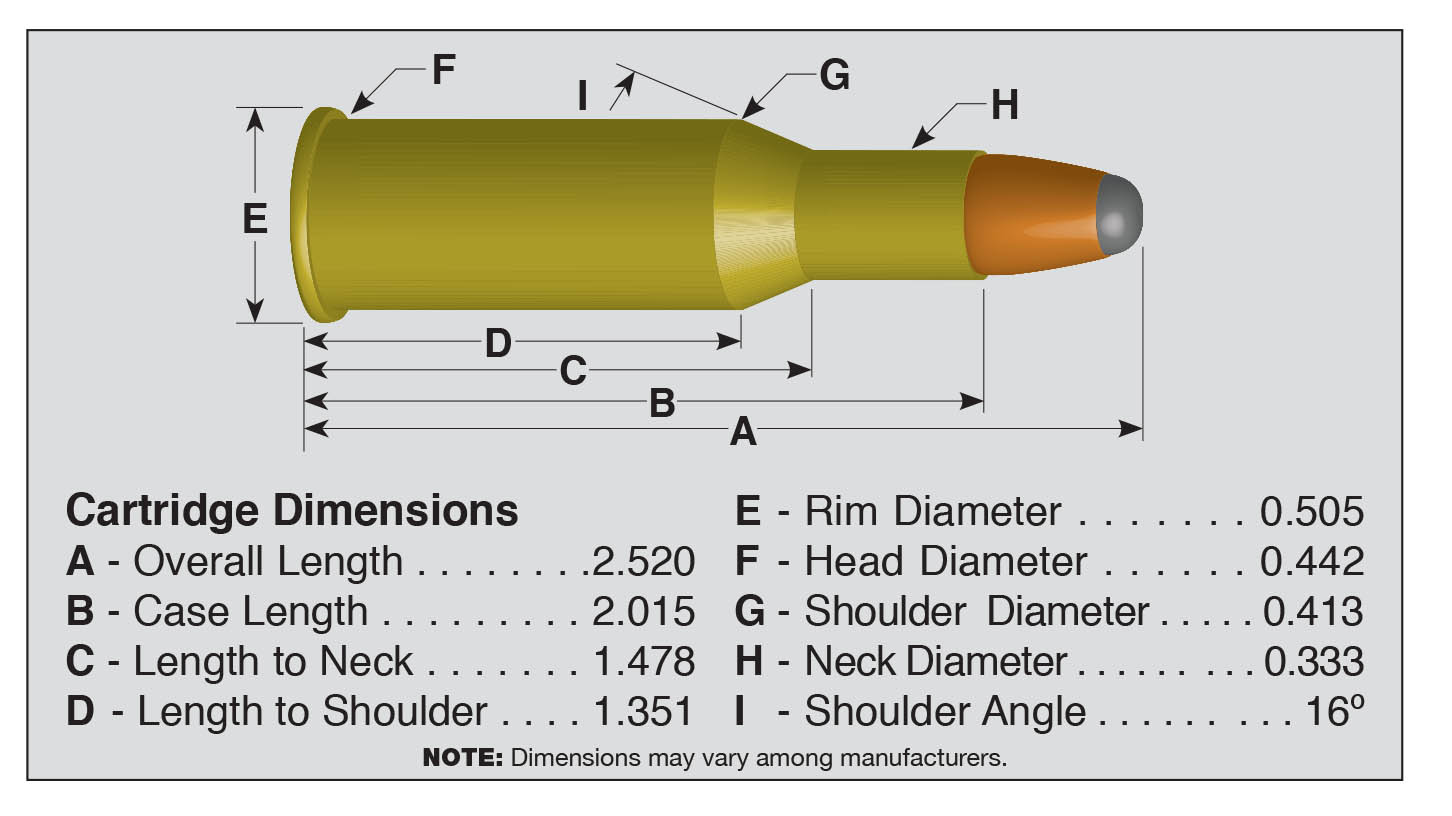
In 1892 Savage submitted two lever-action military rifle designs to a U.S. government testing board at Governors Island, New York. These rifles were definitely not chambered for the round that became the .303 Savage. Instead, it was probably a cartridge similar to the .303 British using smokeless powder that Frankford Arsenal had been fiddling with for some time. They did, however, have what would become the famous Savage rotary magazine.
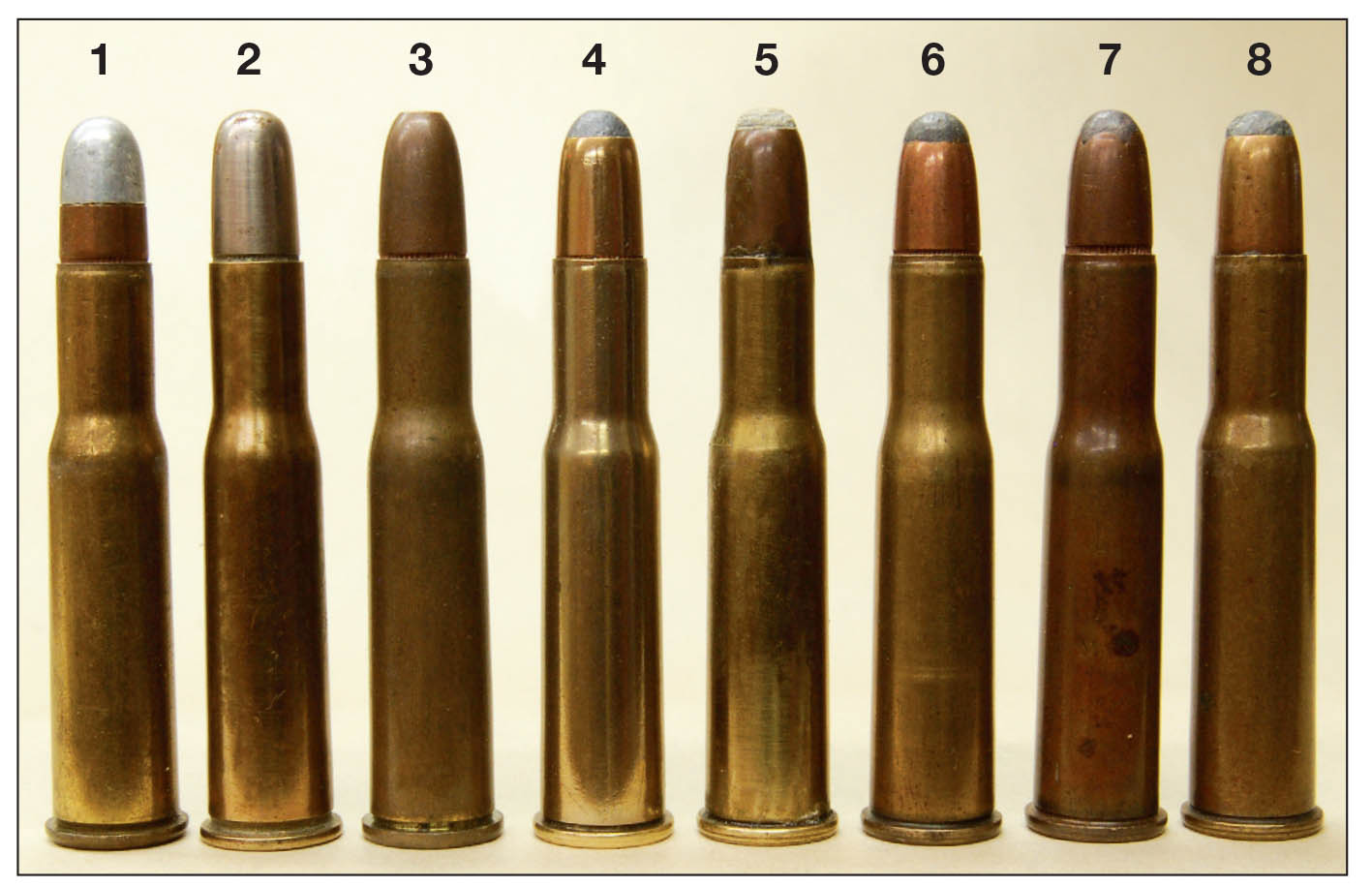
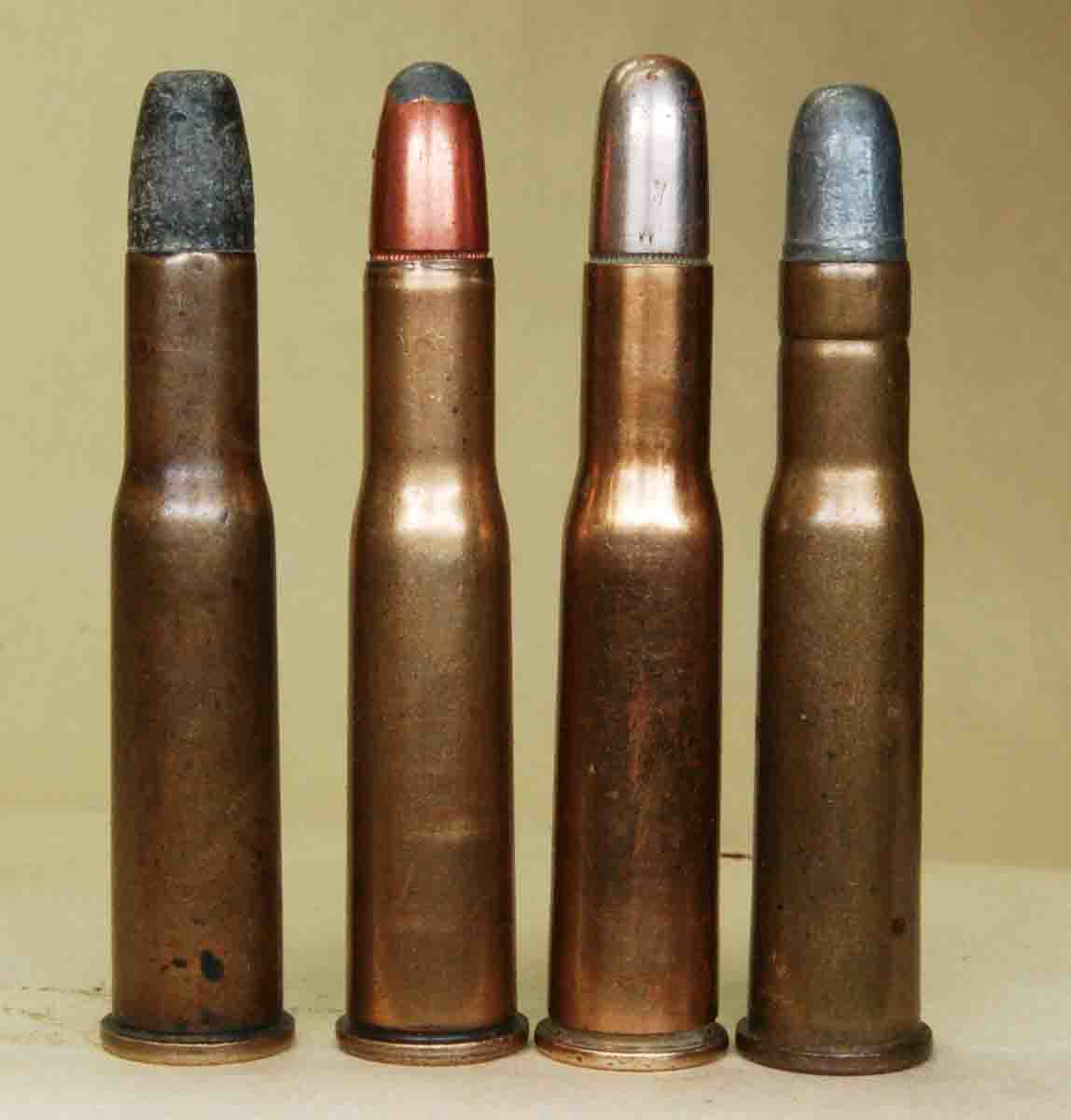
This cartridge’s origin is speculative. There are hints that the two trial rifles had extraction problems, so it would be logical for Savage to shorten the case length, resulting in less surface area to “stick” to the chamber. There seems to be no reason, however, for the cartridge base’s diameter, which was unique at the time. Almost exactly splitting the difference between the .38-55 and .303 British, I doubt it was done just to be different. More reasonable is that a .500-inch rim diameter was the largest possible for the action’s size and magazine Savage had been testing. After allowing enough rim for positive extraction, the base diameter was fixed. Building a new action, magazine, rifles, testing, etc. was just too expensive.
Now consider the number in the cartridge name. All riflemen have heard the .303 Savage was introduced as a smokeless-powder .30-caliber cartridge intended to compete with
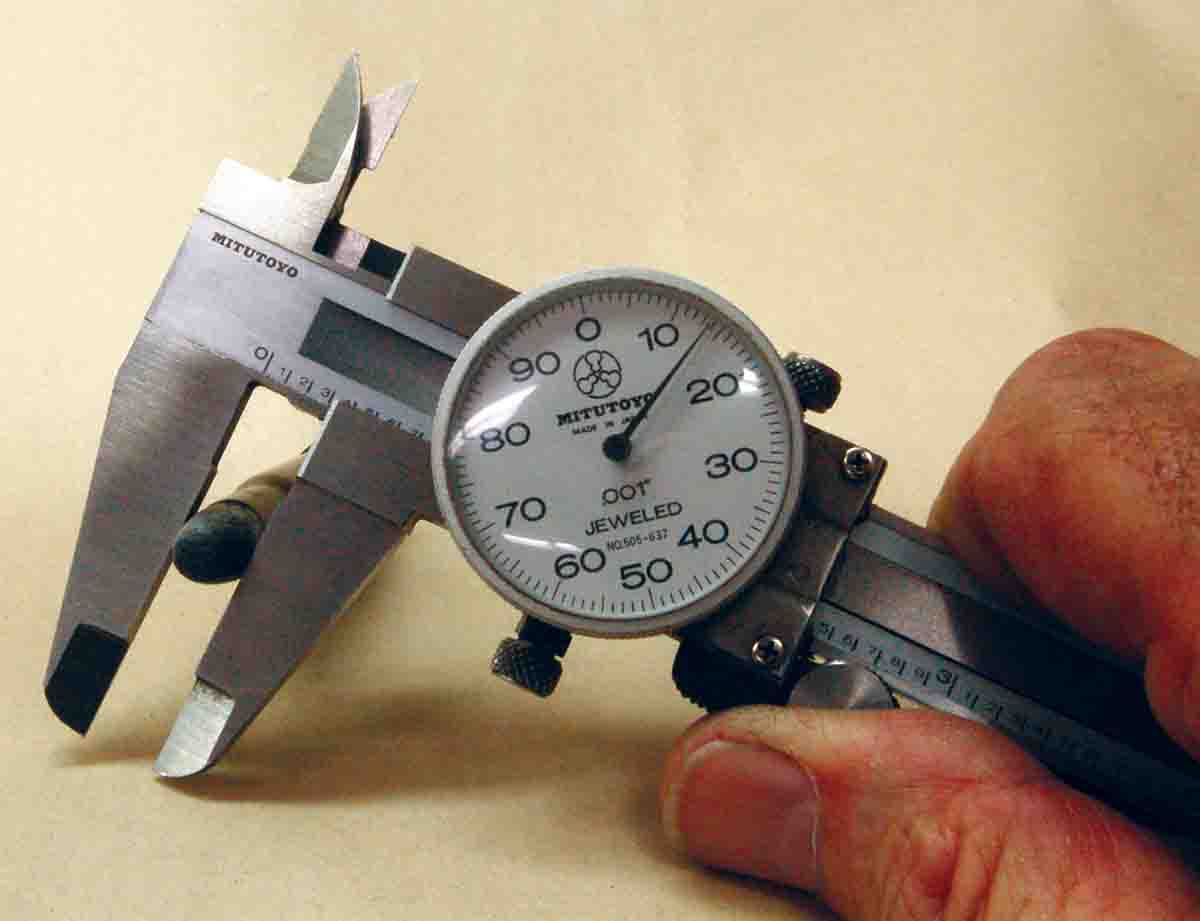
The .303 Savage could not have originally been a .30-caliber round because there were no .30-caliber (.300-inch bore before rifling) barrels or bullets in existence yet. Yes, the government had theoretically decided upon a .30-caliber rimmed cartridge in June of 1892 while continuing to fiddle with bullet weight and diameter. Savage finalized his cartridge from 1892 to 1894. He did not want to wait for the U.S. military, so since all the work had already been done in England for the .303-caliber in perfecting the .303 British cartridge, he simply used it.
Proof of the foregoing comes from existing cartridges. Union Metallic Cartridge (UMC) produced ammunition for Savage in 1895 headstamped “SRA 303” (Savage Repeating Arms) and “UMC 303 SAV.” The company no doubt assisted Savage in development of the cartridge. A UMC factory round in my collection contains black powder and a lead bullet, not oxidized or deformed, measuring .313 inch at the case mouth. Also, the case neck measures .338 inch over the bullet; for later rounds using .308-inch slugs it’s .333 inch. That old round is .303 caliber. Bore dimensions were probably changed to .30 caliber when the Model 1895 became the Model 1899.

When the .303 Savage was made, hunting conditions were very different than today. In the South, East, Northeast and Upper Midwest, thick forests made for short-range shots – 150 yards or less. If still-hunting, distances to the target could be much shorter. Game included whitetails, black bear and perhaps a moose in a couple states. Much of Canada was similar, except the moose and bears were bigger.
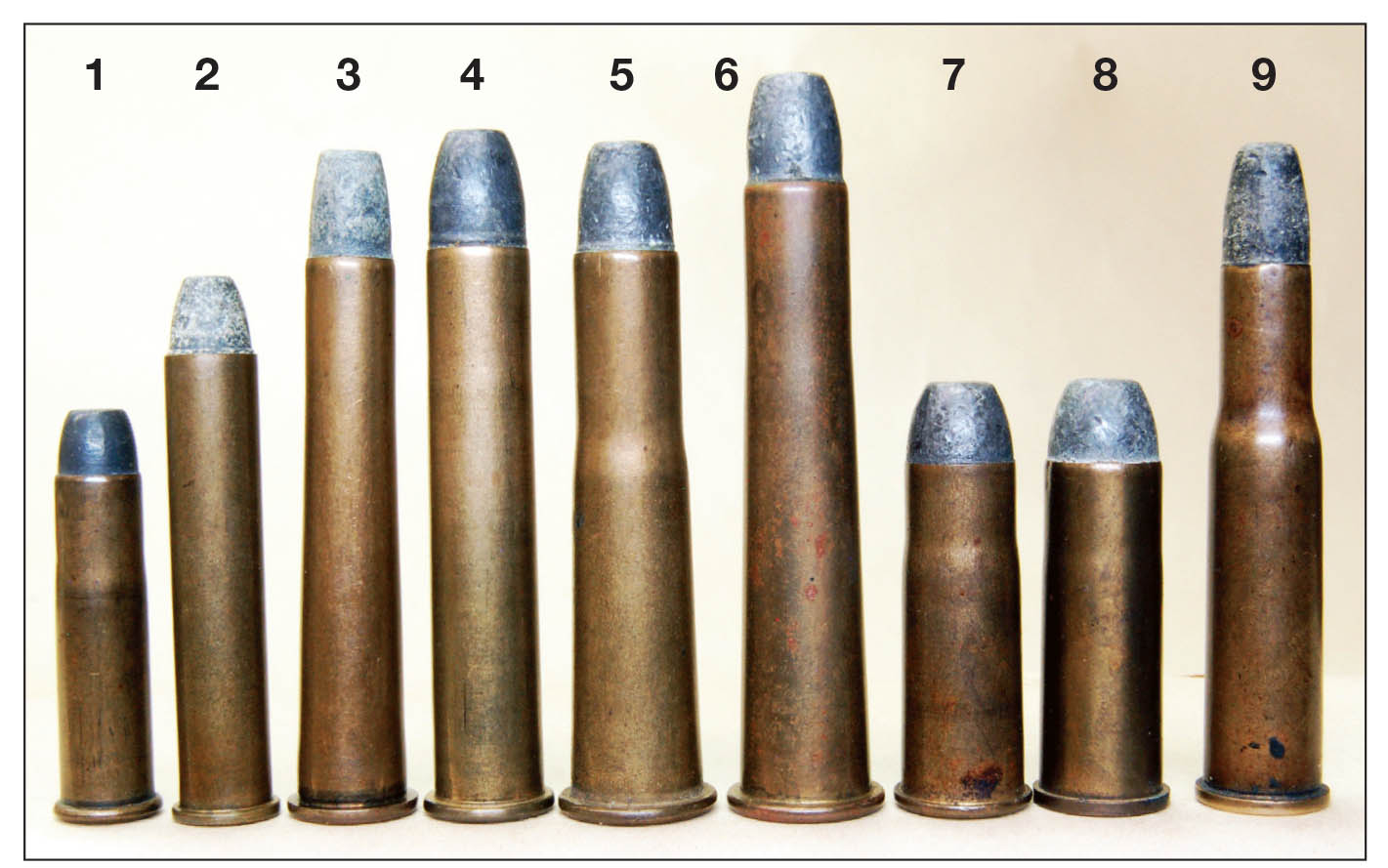
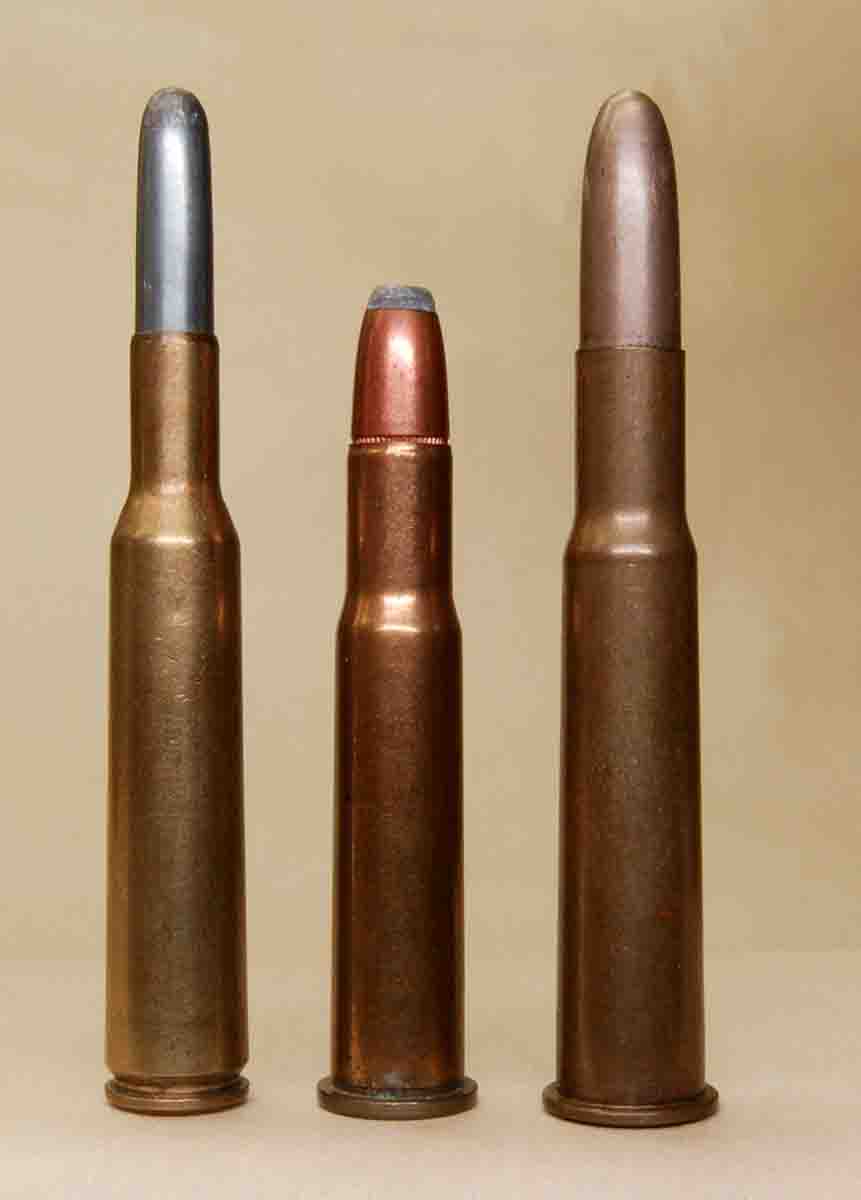
Only one other load was popular for the .303 Savage. That was a 190-grain full metal jacket roundnose. Loaded to the same velocity as the softpoint, it was available from all ammunition companies in the U.S. up to the late 1930s, and in Canada into the 1960s. Apparently a lot of hunters didn’t trust softpoints.
Also listed were cartridges called Miniature, Gallery or Short Range. Bullets ranged from 100 to 105 grains; sometimes pure lead, sometimes full metal jacket. Smokeless or black powder could be offered with either slug. Lead-bullet loads were suggested for 50- to 60-yard shots; FMJs were suggested for 100 to 125 yards. Given that they did not shoot to sights set for full-power loads, their purpose was questionable. All were dropped during WWI or shortly after.
The .303 Savage was so well regarded that it may well have doomed the .30-30 if a company like Marlin had chambered it. Savage even tried selling its Models 40 and 45 bolt guns in .303 (and .30-30) but had few takers. Perhaps other gunmakers just thought offering two rifles that fired rounds so similar was not a wise business decision. We will never know.
Model 99s were listed in .303 up to WWII but did not reappear after the war. Total rifles produced was about 150,000 to 160,000, depending on reference. That amounts to 36 to 38 percent of total M99 production up to that time! The rifle pictured
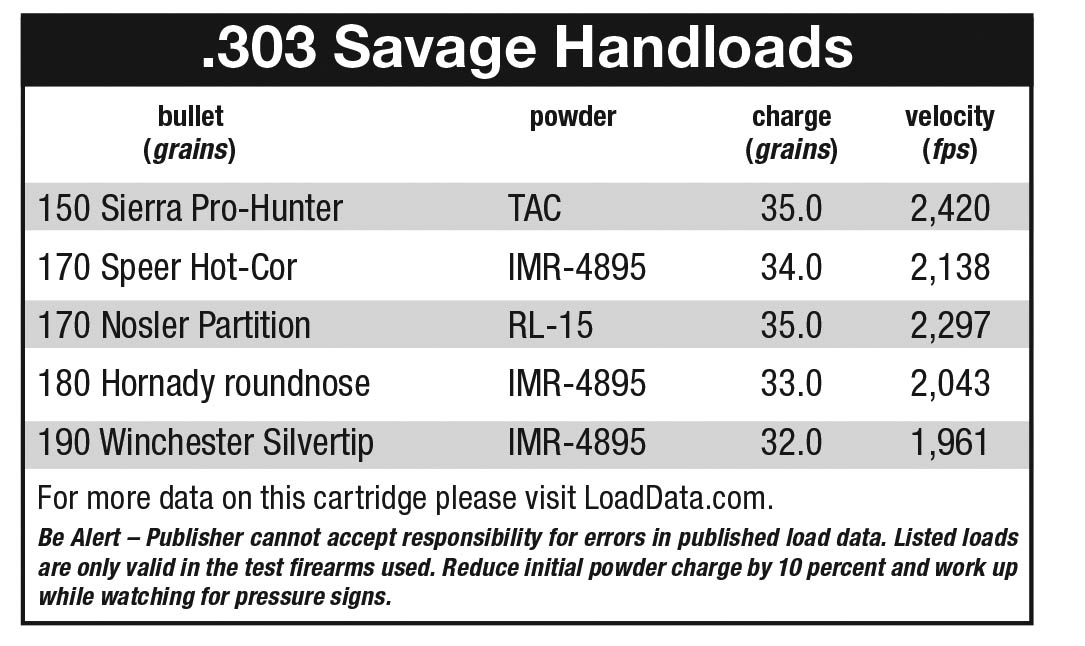
Savage brand ammunition in .303 Savage seems to have been available until about 1960. All Savage ammunition was discontinued in 1963. Winchester continued to offer the original 190-grain softpoint at 1,980 fps muzzle velocity and 1,650 ft-lbs until 1997. Remington loaded a 180-grain Core-Lokt softpoint listed at 2,120 fps and 1,796 ft-lbs until 1977. This ammunition can still be rather easily found.
The .303 Savage introduced the crack of smokeless powder into the quiet of the deer woods. Its narrow 190-grain bullet hit hard and penetrated deeply. The death knell for black powder was sounding. The cold, dark forests would never be the same. Yet it too has passed. A heavier bullet and documented better performance on deer than the .30-30 could not save it. A once highly respected cartridge and its equally respected rifle is being relegated to the safes of collectors as the supply of factory ammunition goes the way of the passenger pigeon.


